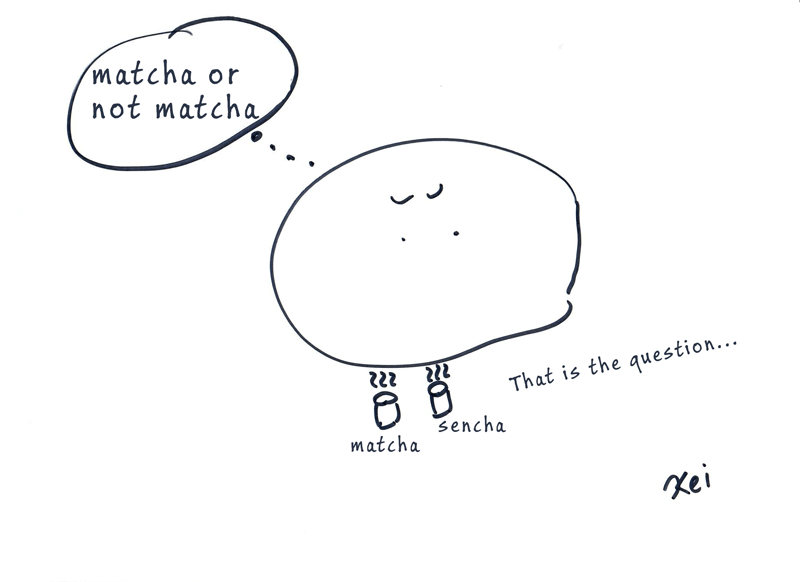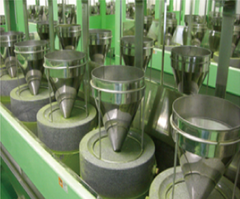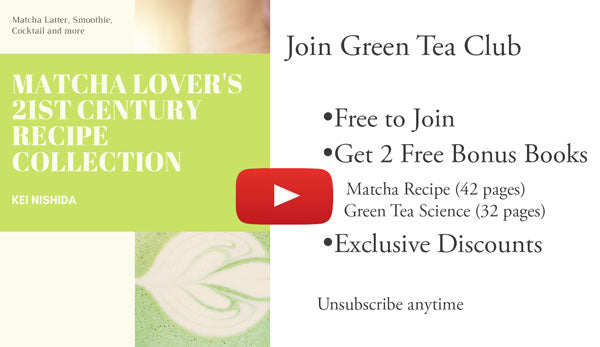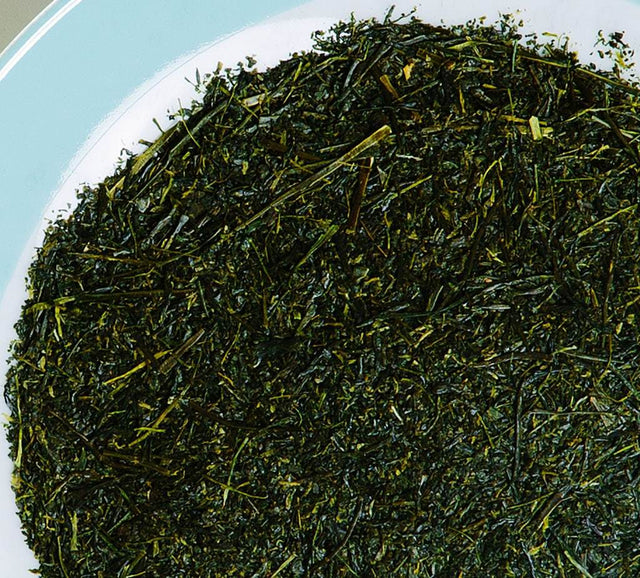Video Length: 3 minutes 46 seconds
This article was posted back in 2018, but since it was popular, we made videos out of it. Watch the video and enjoy the original article below!
Learn More About These Different Types of Tea
So, you love green tea. But you’re not quite sure about this matcha versus sencha business or these different types of tea. Maybe you’ve seen matcha at your local market, but you’ve been hesitant to try it because, well, you have no idea what it is. Or perhaps you’ve only ever steeped your tea and are looking for something new and different to try. Regardless of your motives, the following will clear up any confusion you may have about the differences between matcha and loose-leaf green tea. We’ll cover variations in texture, growing conditions, processing techniques, consumption methods, and price.
A Whole New World: The Differences Between Matcha and sencha (Loose-Leaf Green Tea)
China is credited with introducing tea to Japan in the 7th century. Since then, a unique tea culture has evolved. A variety of different cultivation methods have matured and expanded over time to provide consumers with the best tea available. Two of the most well-known examples of this are matcha and sencha.
6 Ways These Two Types of Teas Differ
Below, you’ll discover seven ways these two types of tea vary.
1. Matcha Is a Powder and Loose-Leaf is Not.
While loose-leaf sencha and matcha are both derived from the same plant species, Camellia sinensis, the end texture, shape, and consistency are completely different. Matcha is a very fine, stone-ground powder. On the other hand, sencha comes in rolled, loose-leaf form.
We’ll go more into detail about the processing procedure that defines these types of tea soon.
2. Matcha and Sencha are Grown in Different Conditions.
Texture is not the only thing distinguishing matcha from sencha green tea. Another stark contrast between the two teas is the conditions in which they’re grown.
Green tea plants cultivated for loose-leaf steeping purposes are grown in direct sunlight. On the other hand, plants grown for matcha are grown in the shade just before they are harvested. Interestingly enough, this method is believed to have been discovered by accident when Japanese tea farmers covered up the tea leaves to prevent them from freezing in the winter. High-grade matcha is grown in almost complete darkness.

Image of covering green tea to block sunlight before harvesting
Covering matcha plants with straw, bamboo mats, or vinyl tarps increases the amount of chlorophyll in the leaves, giving them their deep, green color. Not only does this method of slowing down photosynthesis increase the chlorophyll content, but it also increases the amino acid content, giving quality matcha its distinct umami flavor. The idea behind this is to starve the plants so they crave more sunlight.

3. These Types of Tea are Harvested and Processed Differently.
Although both matcha and sencha leaves must first be steamed to prevent oxidation, they are harvested and processed very differently.
Usually, sencha tea is picked with the stem, shoot, and two or three opened leaves intact (more leaves are intact if picked by machine). Sencha leaves are fanned with damp air to maintain freshness and then steamed to prevent oxidation. After cooling, the leaves are pressed, dried, and made ready for distribution. The leaves may be rolled depending on the specific processing techniques of the region from which they’re grown. Rolling the leaves produces a needle-like shape, which intensifies the flavors when steeped and is usually seen in Chinese tea. (Read my other article comparing Japanese tea and Chinese tea here.)
Unlike sencha, only the youngest parts of the plant are picked when harvesting matcha. More specifically, the two leaves at the very tip of the shoot, similar to sencha, and the soon-to-be-matcha leaves are also steamed to preserve color and nutrients. Thus begins the long and laborious process of removing stems and veins. The leaves that make it through quality control are called tencha.
These leaves are then ground by specialized granite grinding wheels. And voilà! You’ve got matcha!

4. Matcha and Powdered Konacha Tea are not the Same Type of Tea
Although konacha literally means “powder tea”, it shouldn’t be confused with matcha. As mentioned above, matcha tea is ground using granite-grinding wheels. Konacha is actually just made up of the dust and small bits of leaves and buds that are left behind after the processing of sencha.
 Stone Grind of Matcha
Stone Grind of Matcha
5. Matcha is Consumed Differently, Making it Healthier Compared to Loose-Leaf Green Tea.
Matcha and loose-leaf sencha have a plethora of health benefits that attract tea drinkers, but because they are consumed differently, one is inherently better for you than the other.
Here’s why…
When we steep loose sencha leaves, we are not getting all of the antioxidants and nutrients we could be getting if we were to consume the entire leaf — ergo, matcha.
To drink matcha tea means to ingest the entire leaf. By doing so, we get more of the health benefits the plant has to offer.
6. Why is Matcha More Expensive Than Sencha?
As we’ve discovered, the process of producing matcha tea requires more labor than producing sencha tea. Here are two key reasons why matcha tea is more expensive:
- It requires more involvement, care, and skill to produce.
- Quality matcha is only grown in specific geographic regions.
Fake Matcha vs Real Matcha: How to Spot Good Quality Matcha
As with most things in life, not all matcha is created equal. There are some things you should keep in mind when venturing into the land of matcha. Here’s what to watch out for:
Where in the World Does Quality Matcha Come From?
When it comes to green tea, it’s all about the quality of the soil. The plant grown to produce green tea is very sensitive, so experts suggest purchasing matcha from Japan rather than China, as the concentration of lead tends to be higher there. (Read here about Japanese farmers caring for their dirt for their tea.)
You Want It To Look Like Bright Green Grass, Not Taste Like It.
Don’t be fooled by fancy packaging. While location is crucial, so is the color of your matcha. If you find yourself with a can of matcha that’s dull in color, chances are the quality is not what you’re looking for. Now, if you open up the can and are delighted to find a bright, vibrant shade of green (almost neon), then congratulations! You’ve got yourself a high-grade batch of matcha.
Similarly, if you open up the package and an overwhelmingly gross scent of grass tickles your nose, you may have been misled. High-grade matcha should have a sweet smell to it.
Stems or Clumps Here!
Another thing you want to see in your matcha is that it’s been properly de-stemmed, de-veined, and thoroughly ground. You don’t want to find any clumps or pieces of vein and stem lurking in your fresh can of matcha!
Last, But Certainly Not Least — Taste!
As mentioned at the beginning of this article, matcha should be sweet with earthy, savory, and sweet whispers of flavor.
Now Go Relax and Make Yourself A Cup of Tea!
We’ve certainly covered a lot of ground. Much of what you need to know about the two kinds of tea—from how they’re made to how they’re consumed—has been neatly laid out for you. Now you can relax, make yourself a cup of matcha (or sencha) tea, and reminisce about the journey it made from the fields to your lips.
Get Free Bonus Books

Sign up for free to the Green Tea Club to get advice and exclusive articles about how to choose Japanese Tea, and tips, tricks, and recipes for enjoying Japanese tea.
About the author
Kei Nishida
Author, CEO Dream of Japan
Certification: PMP, BS in Computer Science
Education: Western Washington University
Kei Nishida is a Japanese green tea enthusiast, a writer, and the founder and CEO of Japanese Green Tea Co., a Dream of Japan Company. His passion for introducing America to the tea of his homeland was the catalyst for creating the only company that brings high-quality tea from Arahataen Green Tea Farms to the rest of the world. Learn more about Kei





















